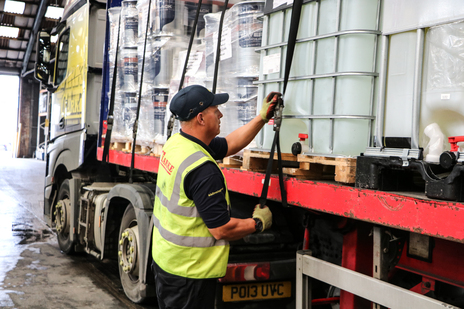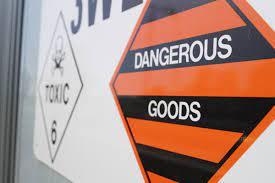Transportation of hazardous goods can be a tricky business. Not all logistics companies have in fact been legally entitled to transport dangerous goods nationally due to the difficult nature of the job. Handling high-risk goods are challenging as it is while adhering to the rigorous standards can require a whole other level of expertise.

Whether you are shipping hazardous loads via road, sea, rail, etc., you will always be subject to health and safety regulations by local authorities. In this article, we are discussing the important considerations that must be taken into account when transporting hazardous goods cross-country.
What are hazardous goods?
These are dangerous goods, made of substances which are considered a hazard to people, the environment or properties.

What types of hazardous goods can you move by road?
The list of goods that a particular logistics company transports will depend on their capacity, preference, and licenses to work with the respective load types. All hazardous materials have a unique four-digit UN number by which they get recognized and identified as specific materials. There is also a classification system that grades the types of materials in decreasing order of danger potential.
| Class 1 Explosives Class 2 Gases (flammable, non-flammable, non-toxic and toxic gases) Class 3 Flammable liquids Class 4 Flammable solids Class 5 Oxidising substances, Organic peroxides Class 6 Toxic and infectious substances Class 7 Radioactive material Class 8 Corrosives Class 9 Miscellaneous dangerous goods |

Sometimes we see clients which are unaware of the nature of the danger their transported goods can have. This is why we advise everyone who has doubts about the content of their deliveries, to check the United Nations classification system and find any possible references with the dangerous goods list. You could always request a consultation with the logistics company regarding the nature of your transported goods and your legal obligations.

Packaging and labeling
After having mentioned regulations on dangerous freight transportation, you must already be prepared to hear about paperwork and necessary packaging, ensuring compliance with the international standards. The aforementioned UN number and the classification grade must be clearly listed and visible on your packaging. This should be accompanied by a declaration explaining the hazard of your items and some additional information about your delivery. Your load should also be securely packed and placed in the cargo truck to withstand breaking or disruption during transit. Last but not least, you need to make sure that your carrier vehicles have the appropriate signs that inform of the nature of the transportation work.

What are ADR and DGSA?
If you are interested in transporting dangerous goods, you must have already heard about these two abbreviations and their legal importance for these jobs. ADR stands for European Agreement Concerning the International Carriage of Dangerous Goods by Road, which you are obliged to comply with if you are moving dangerous goods within Europe. DGSA (Dangerous Goods Safety Adviser) is the qualified person who is appointed by logistics companies, like Zendfast- for advising on the safe transportation practices of different materials and substances. All logistics companies that are legally permitted to conduct dangerous deliveries must ensure that their qualified person is available round the clock for consultation and safety checking of the loads before transit.

Our advice
Transportation of dangerous goods is a big mouthful for smaller logistics companies due to the difficult multi-step process involved with these types of deliveries. We would advise clients to be extra vigilant when choosing a particular carrier for their hazardous goods and their capabilities to complete the job up to the highest standard.
Our team in Zendfast has been provided with security awareness training, hazardous goods handling, and other training certificates, which allow them to work with dangerous items of different types or classes. Our depot centers are also fully secured for storing tanks, pallets, and other containers with hazardous goods before they set off for delivery.

Get a free consultation about your hazardous goods and your individual transportation requirements in Ireland: HERE